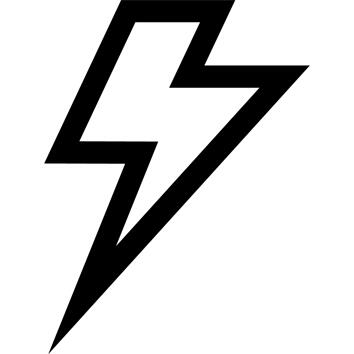Security
This stove complies with standard EN521.
It must be used exclusively with butane-propane mixing cartridges complying with standard EN417.
Decathlon cartridges (100g, 230g, 450g) comply with standard EN417 and are compatible with this 500 stove Quechua.
Read the instructions and precautions for use in the leaflet enclosed with the stove.
Setting up the stove and connecting a gas cartridge :
When installing a gas cartridge, always operate in a well-ventilated area, preferably outdoors, and never in the presence of flames, heat sources, sparks, people or flammable materials.
Check that the gas inlet to your stove is properly closed, and that the gasket is present and in good condition.
Make sure the cartridge is on a stable horizontal surface. Do not shake it.
Setting up the stove and connecting a gas cartridge (continued) :
Hold the device and screw in the cartridge by hand, turning it clockwise as far as it will go, taking care not to damage the thread.
Follow the same instructions when dismantling the cartridge.
It may be dangerous to use cartridges other than Decathlon brand ones.
It is normal for a small "pchit" (escaping gas) of less than 2 seconds to occur when connecting the cartridge to the stove.
Weights and dimensions
Stove weight: 650 g
Dimensions of folded stove: L 20 cm x W 17cm x H 9 cm
Length of unfolded hose: 30 cm
Transport box weight: 270 g
Box dimensions: L 20.5cm x W 20.5 cm x H 10 cm
Weights, volumes & dimensions may vary slightly due to production tolerances.
Ease of use
4-footed pan support, perfectly suited to all cookers with a diameter of over 10 cm and a maximum weight of 8 kg.
Flexible 30 cm metal hose for positioning away from the cartridge and stove.
Easy lighting thanks to the piezo button located near the gas flow adjustment knob. All operations (ignition, adjustments) are carried out away from the fire.
Non-slip feet ensure stability on all flat surfaces.
Installation and operation.
Place the stove on a flat, unobstructed surface. Release the controller stored under the stove and screw the cable end onto the cartridge, thus placing it connected at a distance from the stove. Open the flow control tap, engage the piezo (several times if necessary). Your stove is now lit.
The flow control knob allows you to fine-tune the stove's output, so you can heat quickly or simmer for long minutes.
Safety in use
Do not use your stove in an enclosed space.
Always cook under adult supervision, and be careful around children.
Do not tilt the canister while the stove is in operation, as this may create large flames.
Easy to store and transport
Once you've finished cooking, let your stove cool down. Unscrew the cartridge and replace the controller in its housing under the stove, passing the flexible hose over the burner (the elastic metal sheath protects against residual heat).
Rotate the latch to hold the controller and protect the nozzle.
Store the product in its box for transport, or insert it directly into a 4P Quechua 100 or 500 popote.
Not just a transport box...
To maximize its use, the transport box is suitable for food contact, so it can be transformed during your meals into a salad bowl and serving plate, and after your meals into a box for transporting your food. (Note that it is not totally hermetic with liquids).
Heating time
Our in-house tests give us values that more closely reflect actual conditions of use. In fact, we tested our stoves with 500 Inox 4P stoves, filled with one liter of water.
Result: heating time to boil 1 liter of water: 4 min with a full cartridge. Real power: 1763 watts. Actual consumption: 127g/h.
The results and performance of different stoves must be analyzed on a comparable basis (same conditions and parameters).
Heating time (continued)
The heating time of a stove is the subject of a normative process which is mandatory for EU certification, but which does not necessarily reflect actual conditions of use.
EN521 standard parameters (heat output):
Propane gas at 3 bar pressure, without container.
Results: 3.47kW / 248g/h.
Performance and consumption
Numerous parameters influence the capacity and performance of your stove: atmospheric pressure, wind and humidity... and can therefore vary boiling temperature, heating time and the number of liters heated per cartridge.
The performance of a stove is therefore determined by the ratio of gas consumed to heating speed.







